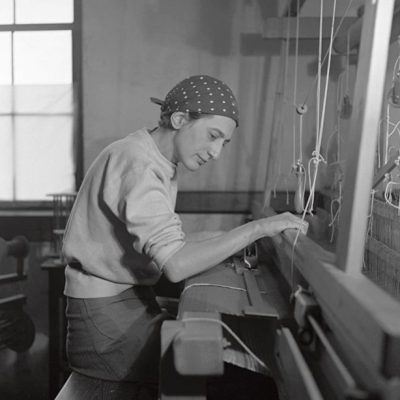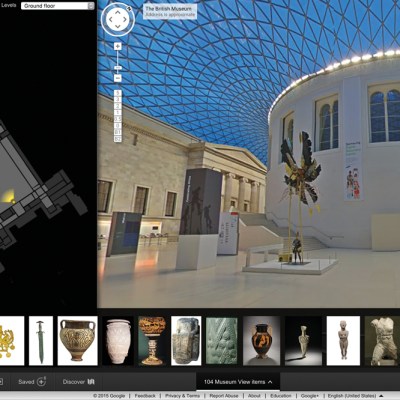Summer is not usually an auspicious time for visiting galleries. Many are closed altogether – taking the opportunity to reorganise stock, repaint walls, and plan for the busy autumn months. A handful stay open, perhaps inviting a guest curator to put together a thematic exhibition or extending runs of shows that opened earlier in the year. But noteworthy projects are generally saved up for after the unofficial break.
This year, of course, is different. Since 15 June, when commercial galleries in England – along with other ‘non-essential retailers’ – were allowed to welcome visitors back indoors, a number have reopened big-name exhibitions prepared earlier in the year, before lockdown. David Zwirner, which took on the estate of Paul Klee last year, has a series of works by the Swiss artist from the final decade of his life, which are remarkably varied in style. (The show opened on 6 March, less than a fortnight before the gallery closed its doors.) Unfussy line drawings in pencil, depicting totemic figures, are presented alongside a selection of watercolours, including a shimmering grid of multi-coloured squares, thickly outlined in black ink, titled Draussen Buntes Leben (‘Colourful Life Outside’; 1931). The work is the clearest link to a series of colour studies by Bridget Riley also on show, on the top floor of the gallery. Look closely and you’ll notice the painter’s notes scribbled on to the margins in light pencil: ‘Mix another deep turq[ouise] same tone as revised but more brilliant.’ As ever, it’s a delight to observe the careful calculations that go into Riley’s hypnotic large-scale canvases (until 31 July).
Draussen Buntes Leben (‘Colourful Life Outside’; 1931), Paul Klee. Courtesy David Zwirner; © Klee Family

At Alison Jacques, originally meant to open in March, is the first in a two-parter devoted to Gordon Parks (1 July–1 August and 1 September–1 October). In 1948, Parks became the first African American staff photographer and writer for LIFE magazine, where he remained for two decades. This exhibition presents photographs from two of Parks’ stories for the magazine, on segregation in the American South in the 1950s and on the Nation of Islam, the black nationalist movement led by Elijah Muhammad that had gained significant traction by the early 1960s, in large part thanks to the advocacy of Malcolm X. Several white reporters had unsuccessfully sought an audience with Muhammad before Malcolm X himself invited Parks to a meeting with the group’s leader. The large-format prints reinforce the power of Parks’ precisely composed images, although it would have been fascinating to read in full the stories that were originally published alongside them – snippets of which are visible in the copies of LIFE displayed in a glass vitrine in one of the galleries. This is an exhibition steeped in history, and yet it has a clear relevance to the long overdue conversations that are now taking place around the centring of black voices and experiences.
Time Warp (2020), Dale Lewis. Courtesy Edel Assanti; © Dale Lewis

It is too soon perhaps to expect good work that reflects directly on the events of these past months, from the protests against police brutality and racial injustice to the global effects of Covid-19. Attentive viewers will, however, spot the term ‘Corvid-19’ in the window of Edel Assanti, where a recent painting by Dale Lewis hangs on a wooden structure facing out on to the street. Among the dismembered heads, cigarette butts, rats, cats and bats jostling for space on the canvas a man in a baseball cap – the artist himself, it seems – sits hunched in front of a row of washing machines, clutching at a newspaper covered in abstract renderings of the coronavirus. A skeleton leans out from the tub of one of the machines, meeting his gaze. The painting, titled Time Warp, is a brutal advertisement for Lewis’s forthcoming show at the gallery, where he will exhibit a 36-metre diorama he has been working on for the past year (opens 15 July).
For those seeking lighter fare, Pace has extended the run of recent ‘Constellations’ by James Turrell: a series of three brightly lit circular glass surfaces that glow in shades of pink, blue and green (until 14 August). Galerie Thaddaeus Ropac has installed a group of works that were intended to be shown at its booth at Art Basel in June, all reliably blue-chip (until 31 July). And at Stephen Friedman (until 31 July) there are some wonderfully tactile tapestries, handwoven in undyed yarn, by the Swedish artist Andreas Eriksson. The gallery also has a new installation of hand-crafted ceramic columns by Jonathan Baldock, haphazardly stacked and adorned with a smattering of hands, ears and mouths. Stand close enough and you’ll hear the columns sing. It’s work like this, appealing to the senses as well as to the mind, which serves as a reminder of why it’s worth escaping confinement to see artworks in the flesh. Just don’t forget your face mask.


